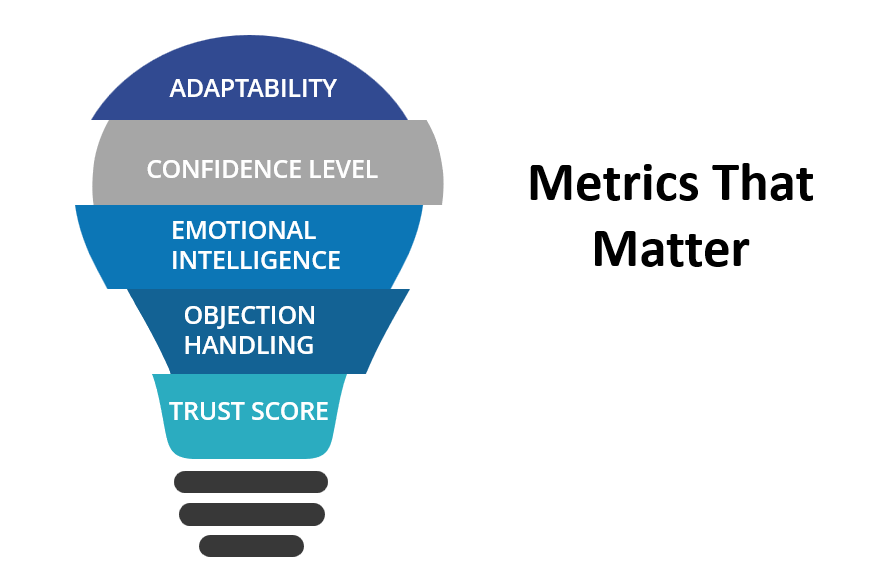Emotional Intelligence at Scale
Training Large Teams for High-Stakes Moments
High-stakes moments, angry customers, life-or-death decisions, critical conflicts, don’t just test skills; they test emotional intelligence. The ability to read emotions, respond appropriately, and connect with others can mean the difference between success and failure in these situations. However, teaching emotional intelligence to large teams while maintaining meaningful impact presents a significant challenge. In this post, we'll explore why emotional intelligence is essential in high-pressure environments, how to create psychological safety, the role of XR simulations in scaling EI training, and real-world applications across various industries. You'll also learn how to measure the effectiveness of your EI training initiatives. Let’s dive in!
1. Why EI Is the Secret Weapon in High-Stakes Work
Emotional intelligence isn’t just a “soft skill.” It’s a performance multiplier in roles where pressure is high and outcomes matter. Research shows that people with stronger EI navigate stress better, adapt faster, and maintain composure when stakes are highest. In sales, that means retaining a client instead of losing revenue. In public safety, it could mean de-escalating a dangerous encounter. In social work, it’s the difference between building trust or losing it in a critical conversation.
For instance, a study by the Harvard Business Review found that teams who practiced emotional intelligence techniques were able to improve customer satisfaction ratings. This is crucial in industries like healthcare, where every decision can significantly impact patient outcomes. High emotional intelligence, therefore, not only promotes better interpersonal relationships but also leads to increased organizational success.

2. Psychological Safety Comes First
Before training on emotional intelligence can be effectively implemented, organizations must establish an environment of psychological safety. This means fostering an atmosphere where team members feel secure taking risks and expressing themselves without fear of negative consequences. In a psychologically safe space, employees are more likely to ask questions, seek feedback, and engage in difficult conversations, essential components for enhancing emotional intelligence.
Organizations can achieve psychological safety through various means, including leadership training that emphasizes empathy and open communication. When leaders model vulnerability and openness, they encourage the rest of the team to do the same. This foundational work sets the stage for successful EI training initiatives.
Not sure where your team stands? Take our Emotional Readiness Quiz first.
3. Scaling EI With XR Human-Controlled Avatar Training
As organizations grow, so does the challenge of effectively conveying emotional intelligence training to a large audience. Enter XR (Extended Reality) simulations—cutting-edge, immersive experiences that provide a safe platform for team members to practice emotional intelligence skills. Through realistic avatar-driven scenarios, individuals can engage in role-playing exercises that mimic high-stress interactions.
Participants experience various real-world challenges guided by trained facilitators who provide immediate feedback and support. These simulations offer the chance to practice responding to difficult conversations, such as delivering feedback or addressing conflict scenarios, in a controlled environment where mistakes become learning opportunities.
One of the significant advantages of XR simulations is the emotional realism they provide. Unlike traditional training methods, which often fail to capture the nuances of human interaction, these experiences allow participants to experience the emotional responses of others, thereby enhancing empathy. Regular practice through such simulations helps reinforce learning, leading to elevated skills in emotional regulation and interpersonal communication.
4. Cross-Industry Examples
Emotional intelligence training through XR simulations is not limited to a single industry, its benefits span across multiple sectors:
- Sales: Sales professionals often face rejection and frustration. Training in EI helps them manage their emotions and those of potential clients, leading to better relationship building and improved conversion rates.
- Public Safety: First responders utilize emotional intelligence to determine how to approach tense or fragile situations, such as managing an unstable individual. Training ensures they can navigate complex emotional landscapes effectively.
- Social Work: Social workers deal with clients from diverse backgrounds and challenging situations. EI equips them with skills to connect on deeper levels, fostering trust and understanding.
5. The Measurable Side of EI
Emotional intelligence can feel “soft,” but the impact is anything but. With SIMO-X™ measurement, organizations can track empathy scores, trust-building behaviors, objection-handling effectiveness, and even customer satisfaction improvements. Data shows when EI training is transferring into the real world, and where coaching can refine it further.
Here are some effective ways to gauge results:
- Employee Surveys: Conduct routine surveys to assess perceptions of psychological safety and team dynamics. Changes in these metrics can signal the success of EI initiatives.
- Performance Metrics: Look for improvement in key performance indicators, such as customer satisfaction scores, conflict resolution rates, and employee retention rates, to evaluate the training's effectiveness.
- Feedback Mechanisms: Allow team members to provide feedback on their experiences with the training initiatives to identify areas of success and opportunities for improvement.
- Change in Behavior: Observing changes in behavior during high-stakes interactions can assess the practical application of emotional intelligence skills learned in training.

As we explore the relationship between emotional intelligence and high-stakes situations, it becomes increasingly clear that training teams in EI is not just beneficial, it's essential. By creating psychologically safe environments and utilizing modern technology like XR simulations, organizations can effectively scale emotional intelligence training. With ongoing measurement and feedback practices, they can ensure that their efforts lead to tangible improvements in worker confidence, empathy, and customer satisfaction.
As you consider your organization's training practices, remember that investing in emotional intelligence at scale is an investment in your team's future success. It’s time to take the next step and book a demo to see how immersive training can empower your team to navigate high-stakes moments with skill and confidence.


